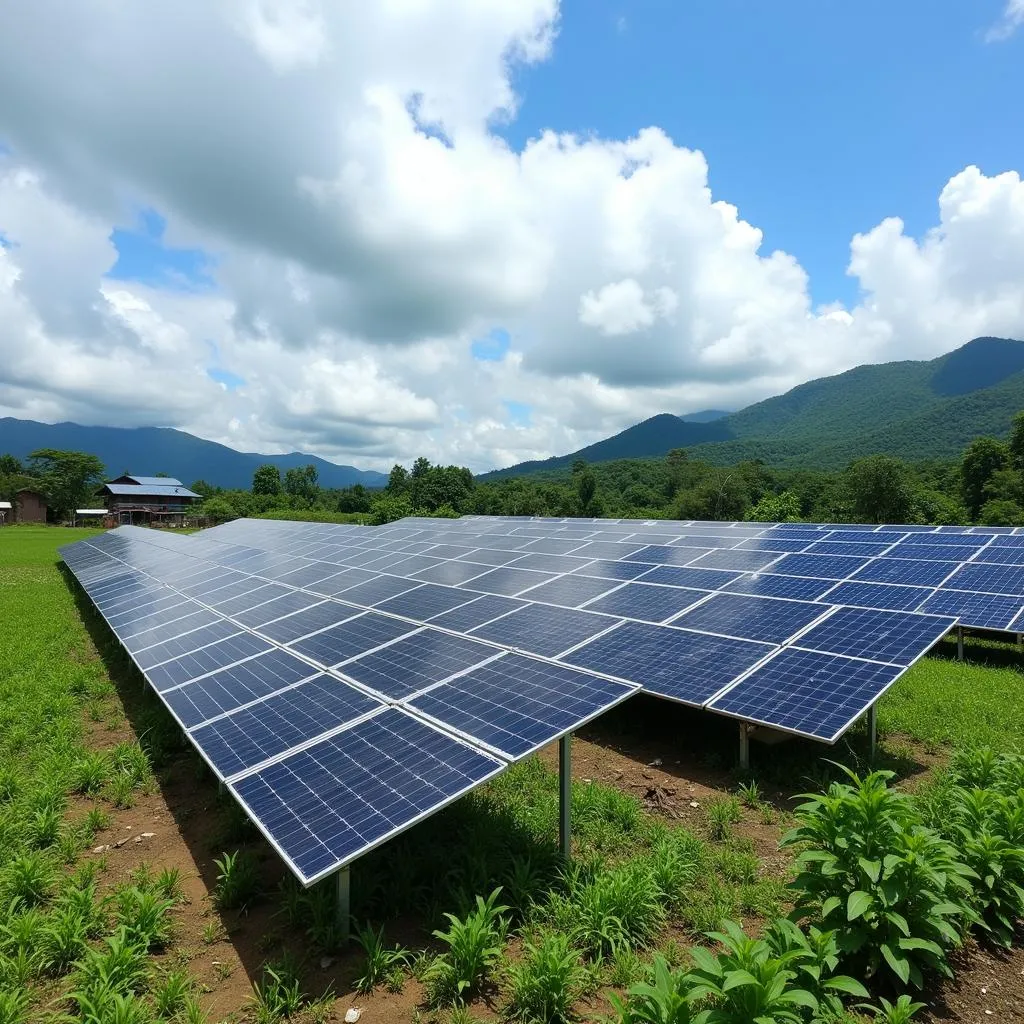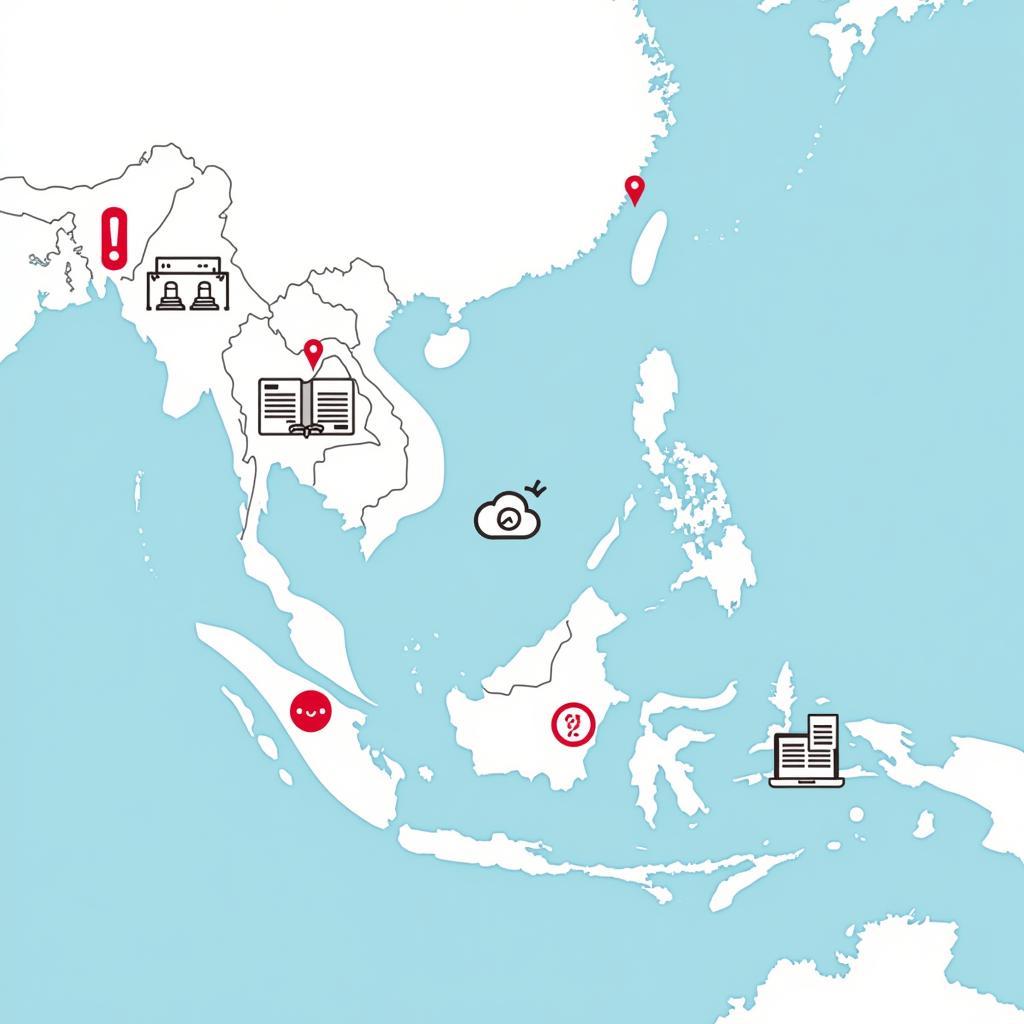Southeast Asia, a region known for its rich biodiversity and rapid economic growth, is facing pressing environmental challenges. The intersection of “Ase Environmental” issues encompasses a complex web of concerns, ranging from deforestation and pollution to climate change vulnerability. This article delves into the multifaceted environmental issues confronting ASEAN nations and explores the collaborative efforts underway to forge a sustainable future for the region.
The Urgency of Environmental Action in ASEAN
ASEAN, as a region, is exceptionally vulnerable to the impacts of climate change. Rising sea levels pose a significant threat to coastal communities and vital infrastructure, while extreme weather events, such as floods and droughts, disrupt agricultural production and exacerbate water scarcity. These environmental challenges have far-reaching consequences for the region’s economic development, social stability, and human well-being.
Key Environmental Issues in Focus
Deforestation and Biodiversity Loss
Southeast Asia is experiencing one of the highest rates of deforestation globally. Driven by agricultural expansion, logging, and urbanization, this deforestation leads to habitat loss, threatening the region’s rich biodiversity. The critically endangered orangutan in Indonesia and the Indochinese tiger in mainland Southeast Asia are stark reminders of the urgent need for conservation efforts.
Air and Water Pollution
Rapid industrialization and urbanization have contributed to severe air and water pollution in many ASEAN cities. Industrial emissions, vehicle exhaust, and open burning release harmful pollutants into the atmosphere, leading to respiratory problems and other health issues. Similarly, the discharge of untreated industrial wastewater and agricultural runoff pollutes rivers and coastal waters, jeopardizing aquatic life and human health.
Climate Change Vulnerability
As a region characterized by extensive coastlines and numerous islands, ASEAN is highly susceptible to the impacts of climate change. Rising sea levels threaten to inundate low-lying areas, displacing millions of people and causing significant economic damage. Additionally, extreme weather events, such as typhoons and droughts, are becoming more frequent and intense, impacting agricultural yields, water resources, and overall livelihoods.
ASEAN’s Collaborative Response to Environmental Challenges
Recognizing the interconnected nature of these environmental threats, ASEAN member states have committed to collective action through various regional initiatives and agreements.
ASEAN Agreement on Transboundary Haze Pollution
This agreement, established in 2002, aims to address the recurring problem of transboundary haze pollution caused by forest fires in Indonesia. It promotes regional cooperation in fire prevention, monitoring, and mitigation.
ASEAN Strategic Plan on Environment
This comprehensive plan outlines a roadmap for environmental protection and sustainable development in the region. It sets targets for biodiversity conservation, climate change mitigation and adaptation, and pollution control.
ASEAN Centre for Biodiversity
Based in the Philippines, this center facilitates regional cooperation in biodiversity conservation. It conducts research, provides capacity-building programs, and promotes information sharing among ASEAN member states.
The Role of Technology and Innovation
Technology plays a crucial role in tackling environmental challenges in ASEAN. Renewable energy sources, such as solar and wind power, are gaining traction, offering cleaner alternatives to fossil fuels. Sustainable agriculture practices, precision farming techniques, and water-efficient irrigation systems are being adopted to enhance agricultural productivity while minimizing environmental impact.
 Solar panels in Southeast Asian Country
Solar panels in Southeast Asian Country
Conclusion
ASE environmental issues demand urgent attention and collaborative action. ASEAN nations are making strides in addressing these challenges through regional cooperation, policy reforms, and technological advancements. However, continued efforts are crucial to ensure a sustainable future for Southeast Asia, where economic development goes hand in hand with environmental protection and social well-being. By working together, ASEAN member states can mitigate the environmental threats, preserve their rich natural heritage, and create a more resilient and sustainable region for generations to come.
FAQs
What are the major environmental issues facing ASEAN countries?
ASEAN countries face several pressing environmental issues, including deforestation, biodiversity loss, air and water pollution, and climate change vulnerability.
How is climate change impacting Southeast Asia?
Climate change is leading to rising sea levels, more frequent and intense extreme weather events, and changes in rainfall patterns, impacting coastal communities, agriculture, and water resources in the region.
What is ASEAN doing to address environmental challenges?
ASEAN has implemented regional agreements, strategic plans, and specialized centers to promote environmental protection, such as the ASEAN Agreement on Transboundary Haze Pollution and the ASEAN Strategic Plan on Environment.
How can technology contribute to environmental sustainability in ASEAN?
Technology plays a vital role in areas such as renewable energy, sustainable agriculture, waste management, and environmental monitoring, enabling ASEAN countries to transition towards a greener economy.
What is the significance of regional cooperation in addressing environmental issues in Southeast Asia?
Regional cooperation is essential as environmental problems often transcend national boundaries. Collaborative efforts facilitate information sharing, joint initiatives, and a coordinated approach to tackling transboundary environmental challenges.
Need Assistance?
Contact us for any inquiries or support regarding environmental initiatives in ASEAN. Our dedicated team is available 24/7 to assist you.
Phone: 0369020373
Email: [email protected]
Address: Thon Ngoc Lien, Hiep Hoa, Bac Giang, Vietnam
For further insights, explore our articles on ASEA water pouches and ASE satfinder.

